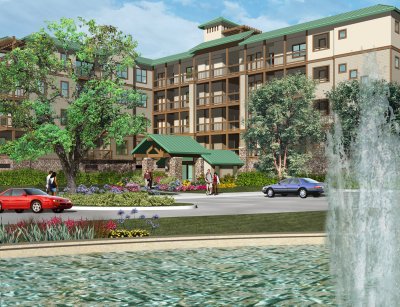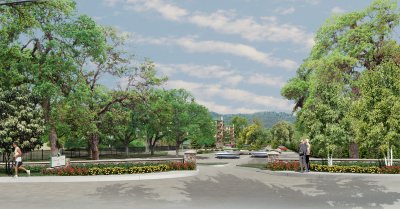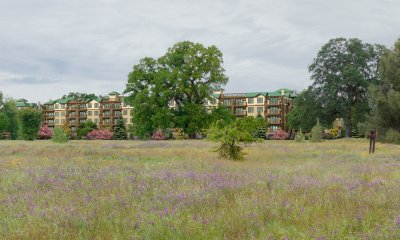- Elizabeth Larson
- Posted On
Serenity Cove resort project gets commission support

CLEARLAKE – A vacation complex to be built on an existing resort has earned the enthusiastic support of the Clearlake Planning Commission as well as city residents, who say the project will help the city's tourism and its look.
At its regular meeting Nov. 6, the Clearlake Planning Commission approved a use permit for Serenity Cove, a 138-unit vacation condominium project, said Commissioner Al Bernal.
The project also will include a restaurant open to the public, a 50-slip marina, a clubhouse, swimming pool and pier/dock, according to city planning documents.
Serenity Cove is currently known as Funtime Resort, but is commonly known as the old Garner’s Resort on Old Highway 53, Bernal explained.
Proposing the development is the firm Serenity Cove LLC, based in San Francisco.
The group includes Leo Cassidy, John McMahon and Damian Johnston, three Irishmen who met after arriving in the United States, Cassidy told Lake County News in an interview.
“We've been friends for a very long time and have been going to the lake there for 20 to 25 years,” said Cassidy.
Since then, he said he's gotten to know every inch of the lake, and watched the community go through transitions. “I've seen seen a lot of changes all through the years there,” Cassidy said.
Recognizing the area's potential, and understanding its resort past, Cassidy said he and his partners began exploring purchasing property for a development.
First, they looked at the Lamplighter Resort, but Cassidy said the “previous regime” in the city's building department raised enough issues with the plan that he walked away from it.
Next, the group began looking at Garner's Resort three years ago, going through a due diligence process because of the potential risk involved in the sizable project. He said they purchased the resort two years ago and began working with city staff on the project.
The five-story condominium development will include 138 units with one, two or three bedrooms in order to serve everyone from single visitors and couples to families, said Cassidy. The entire development will be accessible from the water and open to the public, Cassidy said.
A boardwalk will link to nearby Anderson Marsh State Park, which has plans to expand its walking trails, Cassidy said.
“We put a lot of thought into this,” he said.
The hope, he added, is for the resort to draw back tourism to Clearlake, offering a place with amenities that will appeal to everyone from fishermen to families.
Cassidy also hopes the resort will help draw bass tournaments back to Clearlake. “All the fish are not in Lakeport,” he said.
He suggested Serenity Cove could be a mini Konocti Harbor.
Cassidy said he has been in construction for many years, and has completed developments around the country, most of them much bigger than this one. He said some of his projects include high rises in Miami and Honolulu.
City approves project basics
Clearlake City Administrator Dale Neiman processed the Serenity Cove use permit.
“My conclusion, it's a good project for the city,” Neiman said.
Neiman said the resort currently is permitted for 128 units, so the development Cassidy and his partners are proposing would only increase that by 10 units.
He said there will be a homeowners association, and he foresees retirees, people seeking second homes and young professionals buying the resort's condominiums.
The resort currently has 17 older mobile homes, none of which are in good condition, along with one RV, said Neiman.
Eight of the mobiles are occupied by a total of 16 permanent residents, said Neiman. A survey of the property owners discovered two very low income households, five low income households and one in the moderate income bracket.
Neiman said the residents will need to be relocated before construction can begin. He said it hasn't been decided if relocation assistance will be provided.
None of the residents came forward to ask for assistance at the Nov. 6 Planning Commission meeting, said Neiman. Two of the residents spoke at the meeting and said they saw no problem with the development.
Project gets enthusiastic response
Bernal said a large crowd came to the Nov. 6 Planning Commission meeting. Besides the developer, speakers included resort residents, neighboring property owners, Clearlake business owners and Clearlake Vision Task Force members. He said no attendees at the meeting spoke against the project.
Cassidy said he believes the project is receiving support because “this is a development the City of Clearlake is crying out for.”
The commission had to resolve three issues prior to giving approval for the use permit, according to Bernal. Those issues were the five-story height of the three buildings on the site, preservation of the oak trees on the site and traffic safety concerns for entry and exit to and from the project. The issues were resolved.
The height of the building, said Bernal, will not be an issue for fire protection and will not result in restrictions of views from adjoining properties.
By letting the developers build upward, said Neiman, the city was able to get an exchange on open space, which will help preserve almost all of the eight-acre property's numerous oak trees.
Bernal said only five of 38 mature oaks, some already diseased, will be removed.
On the issue of traffic, the area of the property that faces Old Highway 53 will include road widening to allow for turn lanes, lessening the traffic concerns, Bernal reported.
“What impressed me the most is we've got outside investors and developers that see the potential of Clearalake – the water, the climate – and they're willing to invest in us,” said Bernal.
The quality of the proposed development, its efforts to promote the city and tourism, and the developers' efforts to work with the city, resort residents and neighbors, all strengthened the project's appeal, Bernal explained.
In addition, he said the project dovetails with the goals of the Clearlake Vision Task Force report, which seeks to improve the city's tourism as a way of strengthening the economy.
An added benefit is that the project is a major upgrade of a property currently already used as a resort facility, Bernal said.
Resort won't be built right away
Everyone agrees that construction on the Serenity Cove resort project is still at least two years out.
Bernal said the Planning Commission's use permit approval is the first step towards actual construction of the project.
Next, the developers must gain approval by the State Department of Real Estate and process a subdivision map through the City of Clearlake, Bernal explained.
Then, said Neiman, the developers need to solidify financing, finish construction drawings and submit them to the city, and satisfy the different utility companies' requirements.
When building starts will depend largely upon the market, which has now slowed down, said Cassidy.
The pricing of the condominiums also will depend on how the market looks in a few years, said Cassidy.
By that time, the developing partners will have decided on the materials for the project, which Cassidy said he considered to be “green.” No decision has been made about using solar power, he added.
Cassidy is confident that the market will turn a corner, and he said he believes the coming decade has a lot in store for Clearlake.
“I believe there's going to be major changes up there,” he said.
E-mail Elizabeth Larson at This email address is being protected from spambots. You need JavaScript enabled to view it..




{mos_sb_discuss:2}








